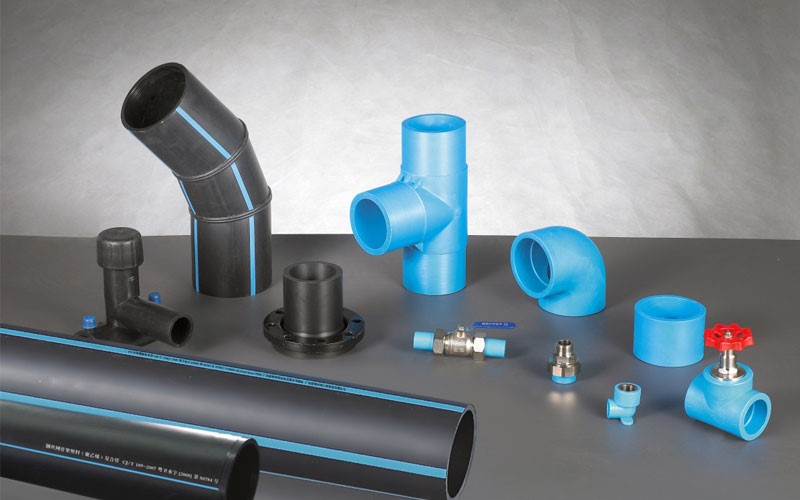Dec . 29, 2024 23:58 Back to list
High-Density Polyethylene Couplings for Reliable Connections and Durable Performance
Understanding HDPE Couplings A Comprehensive Guide
High-Density Polyethylene (HDPE) couplings have become a crucial component in various industries, particularly in plumbing, drainage, and industrial applications. Their unique properties, coupled with their efficient performance, make them a preferred choice for many projects requiring reliable connection systems.
What are HDPE Couplings?
HDPE couplings are fittings used to join two lengths of HDPE pipes. These couplings ensure a secure, leak-proof connection, which is essential for maintaining the integrity of the fluid transport system. Available in several forms, including compression fittings, butt fusion joints, and electrofusion fittings, HDPE couplings cater to diverse application needs.
Advantages of HDPE Couplings
1. Durability HDPE is resistant to corrosion, chemical attack, and environmental stress. This makes HDPE couplings ideal for outdoor installations and harsh industrial environments. They can withstand extreme temperatures and pressures, ensuring longevity and reducing maintenance needs.
2. Lightweight and Easy to Handle Compared to traditional materials like steel and cast iron, HDPE is significantly lighter. This characteristic simplifies transportation, handling, and installation processes, ultimately reducing labor costs and time.
3. Flexibility HDPE couplings can accommodate ground movements, making them suitable for areas prone to seismic activity or soil shifts. Their flexibility minimizes the risk of cracking or failure under stress.
4. Cost-Effective The long lifespan and low maintenance requirements of HDPE systems translate to cost savings over time. Although the initial investment may be comparable to other materials, the durability and reduced need for repairs contribute to lower overall costs.
5. Non-Toxic HDPE is non-toxic and safe for potable water applications. It does not leach harmful chemicals, ensuring that the transported fluids remain uncontaminated.
Types of HDPE Couplings
hdpe couplings product

1. Compression Couplings These fittings are used to connect two segments of HDPE pipe without the need for special tools or equipment. They work by compressing a rubber gasket against the pipe ends to create a seal, making installation straightforward and quick.
2. Butt Fusion Couplings This method involves heating the ends of two pipes and then pressing them together to form a bond. Butt fusion couplings ensure a continuous and strong connection, reducing the potential for leaks.
3. Electrofusion Couplings Using an electric current, these couplings heat a coil within the fitting, melting the HDPE material to join two pipes together. This method is highly reliable and commonly used for critical installations where performance is paramount.
Applications of HDPE Couplings
HDPE couplings are versatile and used across numerous sectors
- Water Distribution Used in municipal water supply systems to connect various pipe segments, ensuring a smooth flow of water. - Sewer Systems Employed in sewage and drainage systems because of their resistance to corrosive materials. - Industrial Applications Used in the transportation of chemicals and other hazardous materials due to their chemical resistance. - Agriculture In irrigation systems, HDPE couplings help connect pipes that deliver water to crops efficiently.
Installation and Maintenance
While HDPE couplings are generally low-maintenance, proper installation is crucial to ensure optimal performance. Choosing the right type of coupling based on the specific application is essential. For instance, for high-pressure systems, butt fusion or electrofusion fittings may be more appropriate than compression fittings.
Regular inspections can help identify any issues indicative of wear or damage. Ensuring that couplings are free from obstructions and leaks will prolong their lifespan and maintain system efficiency.
Conclusion
HDPE couplings are a vital element in modern piping systems, offering a combination of strength, flexibility, and cost-effectiveness. As industries continue to seek reliable and sustainable materials for their infrastructures, HDPE and its coupling solutions will remain essential. Understanding the types, advantages, and proper usage of HDPE couplings enables professionals to make informed decisions that enhance the effectiveness and longevity of their piping systems. Whether in plumbing, irrigation, or industrial operations, the role of HDPE couplings cannot be underestimated.
-
High-Quality PVC Borehole Pipes Durable & Versatile Pipe Solutions
NewsJul.08,2025
-
High-Quality PVC Perforated Pipes for Efficient Drainage Leading Manufacturers & Factories
NewsJul.08,2025
-
High-Quality PVC Borehole Pipes Durable Pipe Solutions by Leading Manufacturer
NewsJul.08,2025
-
High-Quality PVC Borehole Pipes Reliable PVC Pipe Manufacturer Solutions
NewsJul.07,2025
-
High-Quality UPVC Drain Pipes Durable HDPE & Drain Pipe Solutions
NewsJul.07,2025
-
High-Quality Conduit Pipes & HDPE Conduit Fittings Manufacturer Reliable Factory Supply
NewsJul.06,2025

